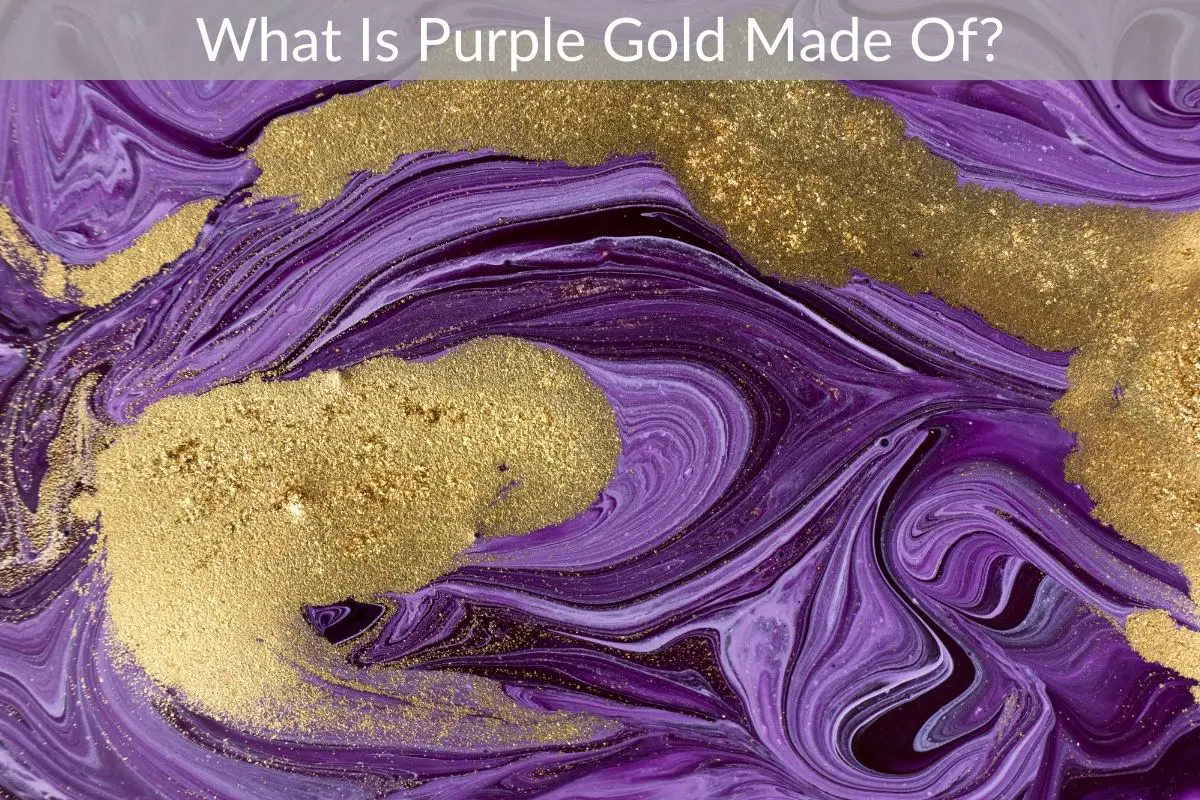Table of Contents
A rare, exquisite, and unique find is what purple gold is. After decades of white and yellow gold, the world needed a change. A little bling was in order, and after much experimenting, the world of fashion got a pump of voltage with the vibrant purple gold.
*This post may contain affiliate links. As an Amazon Associate we earn from qualifying purchases.
The purple hue of this gold makes it so precious, which is why it is only available in 19K gold.
So, how did purple gold come about?
So, we already know that the original gold is yellow. By mixing it with alloys achieves different shades, such as silver, white, and rose, which are the top three gold colors. Let’s take a look at what purple gold is:
The History of Purple Gold
Created by Metallurgist Professor Loh in 2000, purple gold was created in a lab. While Professor Loh successfully created the alloy, it wasn’t soft enough to be molded into jewelry. He then contacted Aspial Corporation Limited, a company that assisted him in developing purple gold with the right karat. In 2002, purple gold was patented and released into the world.
The Make of Purple Gold
Purple gold is considered a precious metal, according to World Gold Council. It is made of gold and aluminum, with the former’s ratio being 79% and the latter’s 21%. This is why it is classified between 18K and 19K.
Advantages and Disadvantages of Purple Gold
Since purple gold is a rare alloy, it is mostly used to create bespoke jewelry. Since it is 19K, it is soft enough to be molded easily. However, this characteristic also makes it brittle compared to other varieties. Unlike silver and white platinum, this gold cannot be used in electronics.
Other Types Of Colored Gold
Now that you know all there is about purple gold, let’s take a look at what other types of colored gold are out there:
Yellow Gold
Yellow gold is referred to as the original gold, which comes in different karats. The most common karat that is used in making high-quality jewelry is 18K. It is made with pure gold, silver, and copper.
Rose Gold
In the early 1800s, rose gold made an appearance and was loved by Russian elitists. In 1917, after the October Revolution, the nobility escaped to the west and bartered their precious gold to acquire property. Soon, rose gold was dubbed Russian Gold because it was a great commodity. In the 1920s, rose gold was widely popular. However, soon, the metal was no longer considered fashionable and became an antique. In the 1990s, when the iron curtain fell, international trade rose, and thus, rose gold once again became popular.
The original metal is made with pure gold and copper, which gives it a red-pink color. There are four types of rose gold, which include:
- 18K Rose Gold (2.75% Silver, 22.25% Copper, and 75% Gold)
- 18K Pink Gold (5% Silver, 20% Copper, and 75% Gold)
- 18K Red Gold (25% Silver and 75% Gold)
- 12K Red Gold (50% Copper and 50% Gold)
The price and quality of the 18K varieties are similar to that of yellow gold. As for the 12K variety, it is much cheaper due to the high percentage of copper and low purity.
In the 18K options, pink gold is softer compared to rose gold, as it requires more maintenance. Since rose gold contains copper, it is not hypo-allergenic. Hence, you need to make sure that the person you are buying rose gold for is not allergic to copper jewelry. While the color rose gold is romantic, a skin rash is not!
Blue Gold
A new addition to the gold family, blue gold has yet to become a fashion trend. This colored gold is made with pure gold and either indium or gallium, giving it a greyish hue. The purity level of this metal is 11K, which makes it fairly inexpensive but not as durable as white gold or rose gold.
Usually, the blue shade is achieved by plating sterling silver pieces with gold and treating it with a blue dye. Most people refrain from purchasing blue gold because it looks a little gaudy.
White Gold
White gold is a gold alloy that falls in the same category as nickel, platinum, silver, and palladium. This metal encompasses multiple colors, which means that green and pink gold can also be called white gold.
White gold is usually combined with silver to make it strong. When combined with palladium, you get a bendable alloy. Thanks to the different properties each alloy holds, they can aid in the stages of the jewelry-making process.
White gold jewelry made in high karat comprising multiple alloys is more expensive. If it contains mercury and nickel, which happen to be skin irritants, the jewelry will be way less expensive.
Green Gold
The history of green gold dates all the way back to the 6th century BC. Green gold was initially used as currency in Lydia, which is now known as Turkey. There was a time when green gold was considered white gold in Ancient Egypt and was used in sacred structures like obelisks and pyramids. Today, green gold is used to make the Nobel Prize award, a trend that started in 1980.
Green gold is available in 14K and 18K. Both their shades vary based on the level of pure gold, cadmium, zinc, copper, nickel, and silver in them.
Black Gold
This gold is made in three different methods:
- Chemical vapor deposition
- Oxidation
- Patination
All processes are complex and involve plating gold. As a result, black gold isn’t exactly gold, as its plating will wear off in about a year, leaving you with white gold.
Grey Gold
This is a palladium-gold alloy. Due to its soft nature, grey gold is mostly used for inserting gems in jewelry rather than making pieces.
Conclusion
Purple gold is associated with luxury and loyalty. It includes the fierceness of red and the tranquility of blue, giving it a more balanced vibe.
When we see a person wearing purple gold jewelry, it tells us that the wearer is flashy, ambitious, and outgoing. So, if these three traits describe your personality to a T and you are looking for something exquisite, opt for purple gold jewelry.

